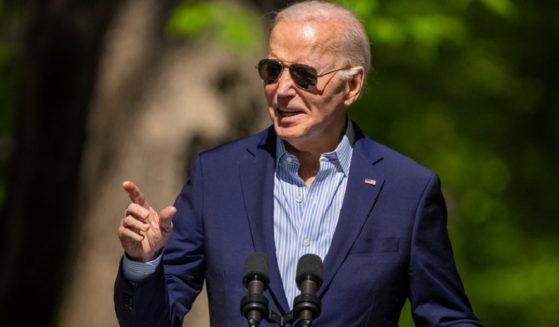CDC Director Announces States Are Ready for Reopening
The director of the federal Centers for Disease Control and Prevention said that the worst of the first wave of the coronavirus impact appears to be over and that he is confident the nation’s public health infrastructure will be up the challenges ahead as the nation reopens.
“I want to clarify that the community-based transmission, the community-to-community transmission that overwhelmed the public health departments in late February, March, April, that’s really coming down,” CDC Director Robert Redfield said in an interview with The Hill.
“CDC is putting out guidance,” he said when asked if the nation is ready to start reopening. “We put out a lot over the weekend again about you know how to reopen safely.”
“Right now, what CDC and the state public health systems are doing is we’re fighting outbreaks,” Redfield said. “And we’re going to continue to do that over the summer. And as we do that, we’re going to be expanding what I just told you, but we have the capability and as part of the guidance that we gave — that the president gave — for the states to open up, it was important that they could test people that have flu-like illness and or syndromic disease. They could set up surveillance. They had the contact tracers that they needed right now.”
Redfield said the impact of the coronavirus has alerted the nation to the need for a stronger public health system that is now being put in place.
“I think it’s really one of the important awakenings for a broad aspect of our society is that the public health infrastructure of this nation has been under-invested in for decades,” he said.
“The public health capacity of this country is great, but the challenge has been we haven’t had a sustained investment in data modernization. We have some health departments that are still using pen and pencil.”
The federal response is designed to avoid further economic shutdown, Redfield said, noting, “We can’t go back there.”
“[W]e are establishing really a robust surveillance program, which is going to be very intensive on testing,” he said. “We’re expanding the nursing home testing so that every individual resident of a nursing home will be tested so we can make sure. We’re going to be developing similar surveillances in inner city clinics and homeless populations and meat-packing things, that other parts of society to try to figure out what the best way is.
“But I want to be confident and give — I’m confident that if we make this investment, we’re going to get the infrastructure in place, and we have every intent of sustaining containment,” he said.
Redfield said contact tracing is vital as the nation reopens and prepares to deal with future waves of the virus in the fall and winter.
“We need to have contact tracing. And that means those contacts have to be all identified and traced and evaluated and tested within a day or so,” he said.
“They need to have capacity to isolate people, and, you know, there are a number of people that are going to need isolation that don’t have homes or they live in multigenerational houses. That has to be developed. And then again, this is part of the critical component so we can do this,” Redfield added, calling for a future contact tracing public health workforce of about 100,000 people, more than triple its current size.
He said the complexities of the future are “why I said this fall/winter is going to be difficult. I didn’t say it was going to be worse. I didn’t say it was going to be more deadly, as some quoted, I said it’s going to be more difficult because we’re going to be getting the second experience with coronavirus as it expands in the fall and winter at the same time we’re getting influenza.”
One critical issue for public health has nothing to do with the coronavirus, according to the CDC director.
“What we can do is get the American public to a point that they’ll embrace flu vaccine with confidence. Right now, less than 50 percent of the American public take advantage of the flu vaccine, and many people don’t realize — sadly were over 90,000 deaths from coronavirus so far this year — but over the last decade, we lost 360,000 people who died in this country from flu. And we have a vaccine that more than half of the people in this country decide not to take,” he said.
Redfield said components of coronavirus containment are being put in place.
“The testing has to be readily available, and it’s increasing. I think yesterday there were 400,000 tests done in a day,” he said.
But he noted that testing has its issues.
“One of the complexities about the coronavirus, unlike flu, is that a substantial amount of the human-human transmission is occurring from people who don’t even have symptoms. So that makes it harder. How do I know who’s infected if there’s no symptoms?” he said.
When asked about differences between CDC guidelines and White House guidelines for states as they reopen, Redfield replied that “politics didn’t push us there.”
“[T]his outbreak has gone from a CDC to an all of government response. As a consequence, there are guidances that we come up that have significant interagency implications and say they go up through an interagency review,” he said. “And the interagencies make different comments and they come back to us not as mandates, but as comments. And then we have to integrate them.”
Redfield said not every document is designed for every reader.
“One of the things that became clear at the task force when we put up our initial guidelines is the number of people criticized, and I think, appropriately, that a lot of our guidelines are written in what they called CDC-eze, meaning that they’re not easy for the American public to actually get through,” he said.
“And so the decision was, why don’t you guys do some decision trees that are simple, one-pagers. You’ve probably seen them targeting the American public. And we released those six decision trees last week. But behind those decision trees are the regular specific CDC documents that we have for the public health community.”
Truth and Accuracy
We are committed to truth and accuracy in all of our journalism. Read our editorial standards.












